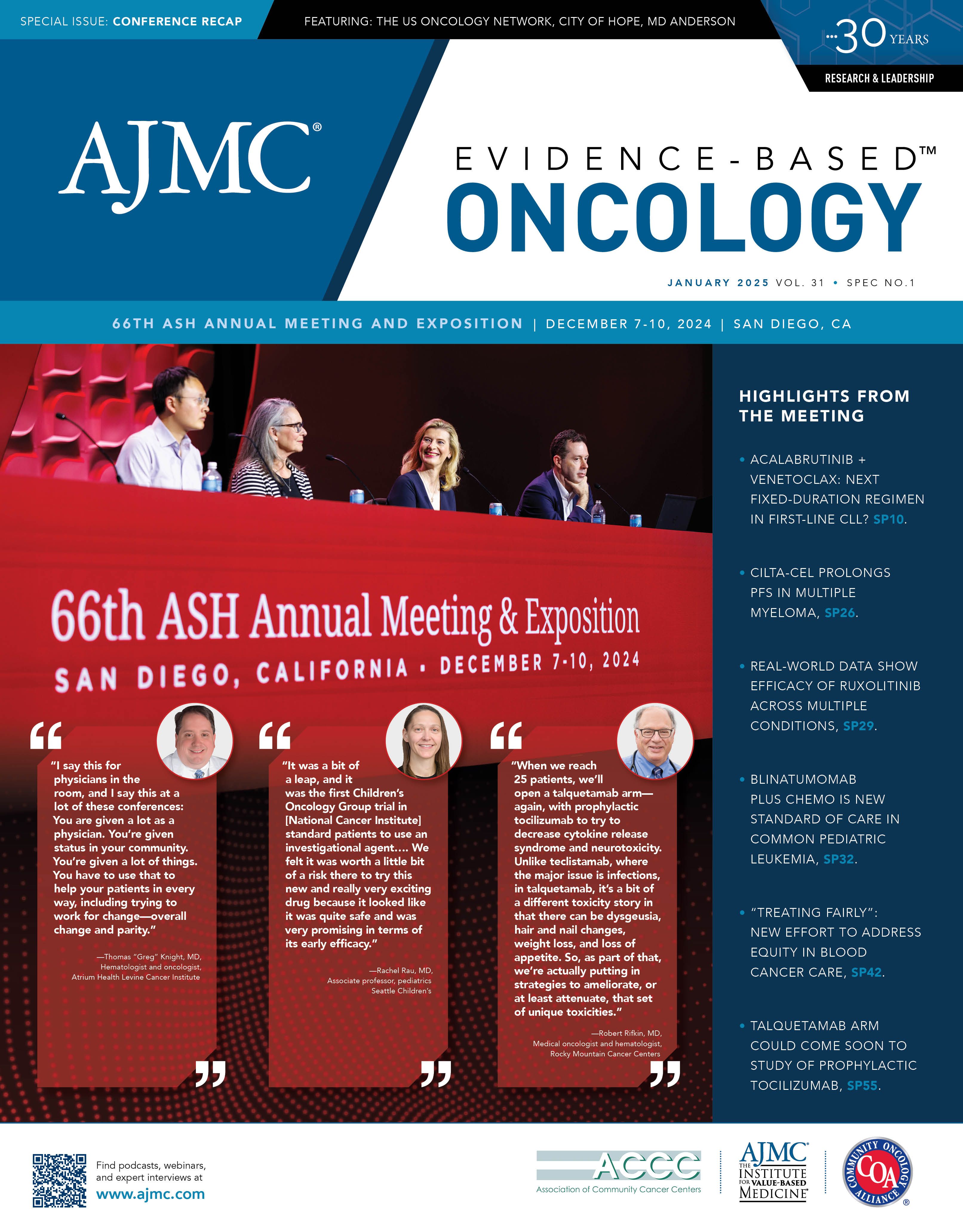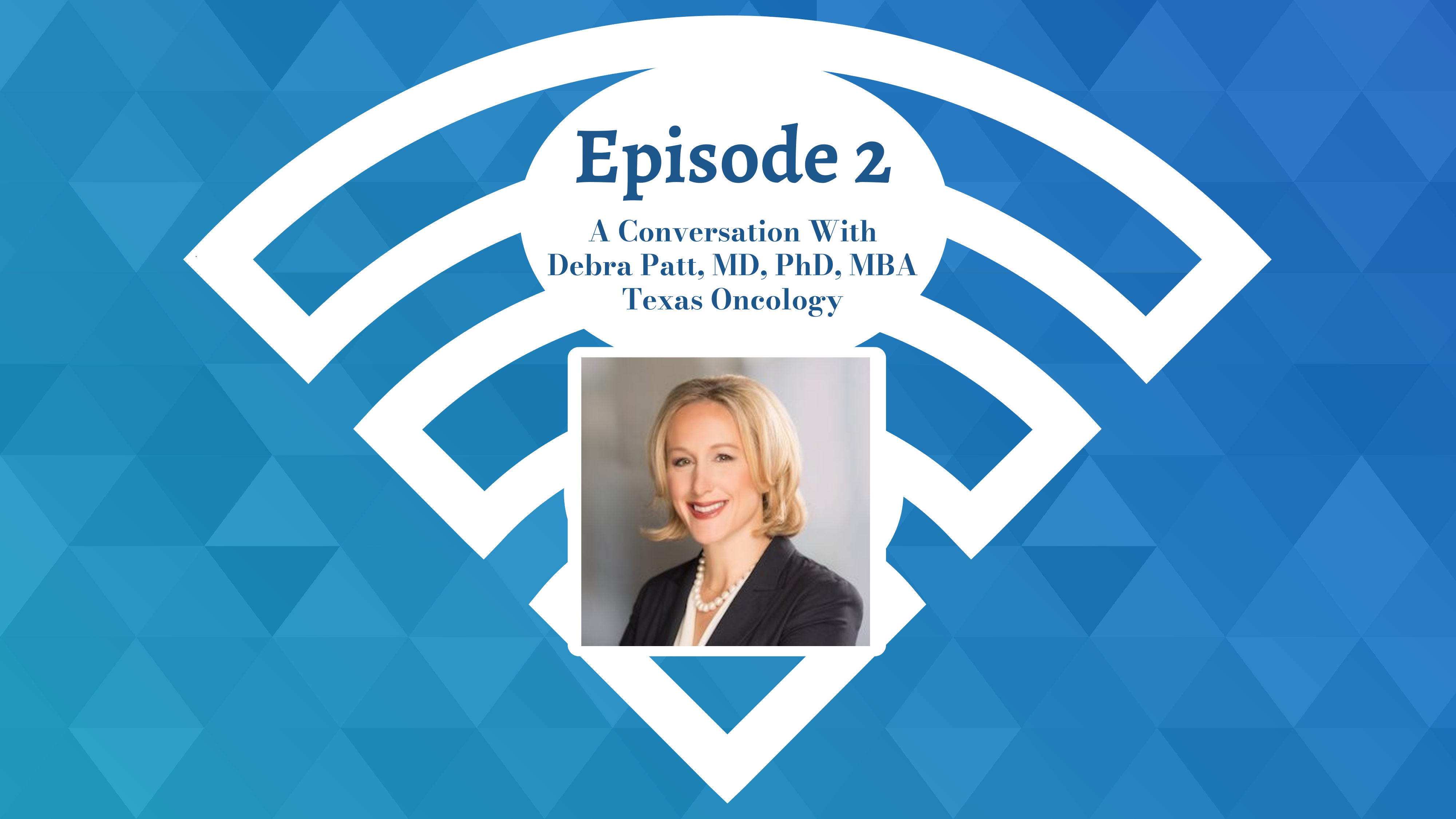Publication
Article
Evidence-Based Oncology
Spotlight on Access and Equity: Bispecifics for Multiple Myeloma in the Community Setting
Author(s):
Key Takeaways
- Initial uptake of bispecific antibodies for multiple myeloma is promising, especially for Black patients, aligning with disease prevalence.
- Further data on social determinants and insurance status are needed to ensure equitable access to advanced therapies.
Initial uptake of bispecific antibodies in the community setting has been strong, with positive implications for increased access for patients with multiple myeloma (MM), but more data are needed on individual characteristics of patients receiving these therapies, such as social determinants of health and insurance type, Ira Zackon, MD, explained to The American Journal of Managed Care (AJMC) in an interview.
Zackon, senior medical director, oncology research and insights, at Ontada, coauthored a paper presented at the 66th American Society of Hematology Annual Meeting and Exposition on the real-world utilization of bispecific antibodies to treat patients with relapsed/refractory MM in a community setting.1
This transcript has been lightly edited.
AJMC: The uptake of bispecifics for Black patients with MM in the community setting was close to the known percentages of the population with the disease. What do the data tell us about access to leading-edge therapies for diverse populations in clinical trials and academic settings?
Zackon: It’s a really good question, and the premise of the question is correct. There was a concern that Black patients have a higher overall incidence of myeloma proportionally and that they are underrepresented in the clinical trials. We extrapolate results of clinical trials and apply them to everyone, and we can’t always know if that’s true in terms of our expectations when we have patient [groups] that are underrepresented.
The access question was really the focus of this, so it’s encouraging that we saw the percentage of Black patients to be proportional to what we might expect in our population—understanding that these data are coming from the largest aggregated group of community oncology practices such as The US Oncology Network [The Network] and other community practices that use this electronic health record so we have access to the data. It’s a wide geographic reach, [and] I think The Network sees approximately 50% of all new patients [with cancer]…. [Because of that wide reach, what] we’re seeing is representative, which is good.
But I think we have to keep our eye on that to make sure that we see that pattern continue. We need to understand that one of the limitations of our data is the source of the data. It’s largely The US Oncology Network; it may not translate completely to other community practices, depending on their resourcing, because there’s a lot of support for helping to stand up your delivery of bispecifics within The Network.
AJMC: Is the geographic distribution (fewer of the participants are from the Northeast) a reflection of any differences in access or more a reflection of where your practices are located?
Zackon: In our data set, it’s the latter. It really represents that the Northeast is underrepresented simply by the [smaller] number of practices in this database that are located in the Northeast. It doesn’t account equally for a large part of the population of our country.
AJMC: Did you pick up on any differences in uptake by insurance status?
Zackon: That’s a really good question, and it’s somewhat a surrogate for potential barriers to access. We did not look at that only because we were taking a very high-level, initial look at the data, and those data require a little bit more interrogation of a different database. We did not do that for the purposes of this study. We know that the median age of diagnosis of myeloma is 69 years, so it’s predominantly a journey in our later years. Those individuals will have Medicare. They may or may not have Medicare Advantage or supplemental coverage, and a much smaller percentage might have Medicaid and Medicare.
Again, the next step to look at this, as we have more follow-up time, will be to look at not just something like insurance, but also data that can look at socioeconomic status based on zip codes in rural vs urban areas. I will mention that another encouraging signal was that in our data, we saw that 15% of the patients receiving a bispecific were in a rural setting. That’s a good early signal that it can be delivered in an office site that is more remote and, again, that’s important in terms of access. So, it’s insurance, and it’s rural vs urban settings. But also, again, it is social determinants of health.
The EHR [electronic health record] has increasing data on the variety of different social determinants using the [National Comprehensive Cancer Network] Distress Thermometer, which is an available standard tool. We really hope to paint a really broad picture of our patients with myeloma to understand if we see any different utilization of these particular therapies. Can we drill down on what factors might be driving that?
Reference
Herms L, Su Z, Paulus J, Zackon I. Real-world utilization of bispecific antibodies for treatment of relapsed/refractory multiple myeloma in the US community oncology setting. Presented at: 66th American Society of Hematology Annual Meeting and Exposition; December 7-10, 2024; San Diego, CA. Abstract 2410.






